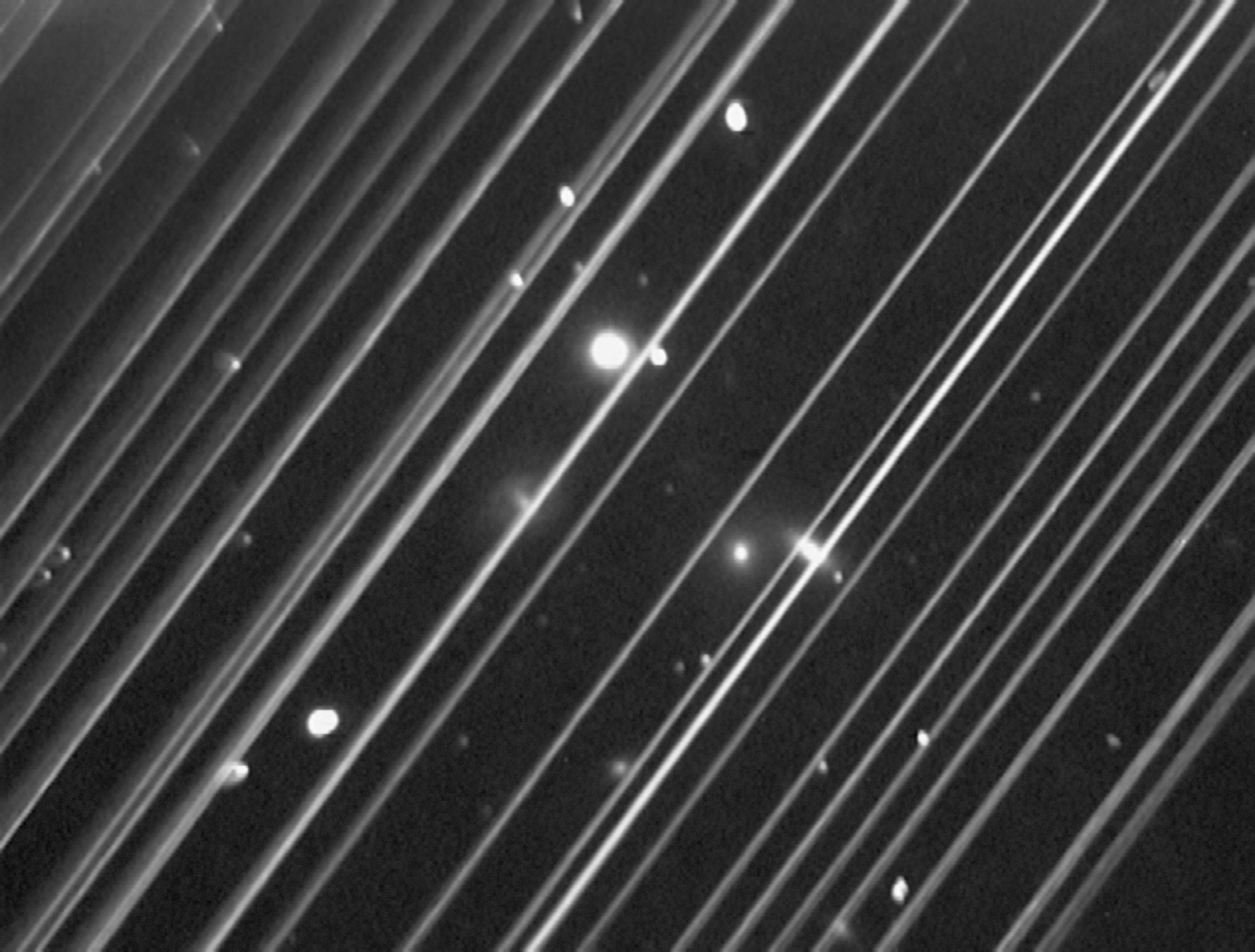By 2021, Elon Musk will have launched his next endeavor, Starlink, a modern solution to global connectivity. Starlink’s 12,000 satellites (and eventually 42,000) in low-earth orbit will provide broadband internet connection to all corners of the globe, promising a future where all nations will be able to communicate with others at a speed faster than ever before.
“These constellations do provide a very valuable service, particularly for internet coverage in rural areas,” says Dr. Patrick Seitzer, professor emeritus of Astronomy at the University of Michigan.
The satellites will allow millions of people to have access to the world’s largest databases of information, increasing education, communication, and the global economy. Through newfound broadband internet, Starlink will assist in accelerating the development of poorer countries, allowing them to have a voice in the global conversation and providing them with opportunities that otherwise would have been impossible.
Starlink is estimated to cost approximately $80 USD per month in the United States for 1 Gigabit-per-second internet, about $120 cheaper per-year than Verizon and AT&T at the same speed. However, Starlink is predicted to work in almost all locations, whereas current internet retailers only work within buildings.
While they use fiber-optic cables that line the seafloor to deliver high-speed internet across the world, Starlink’s low-earth orbit allows 40% faster connections because electromagnetic signals travel faster in air and vacuum than glass tubes. “They could easily have speeds of up to less than a tenth of a second from your device to the satellite and back,” says Dr. Seitzer.
Additionally, other, less-obvious solutions come with a cheap global internet network. “They will be very useful for emergency communications,” says Dr. Seitzer. Starlink is currently accelerating their latest deployments for the upcoming hurricane season, when communication ‘dark zones’ often emerge after cell towers are destroyed. “They want to provide rapid internet during an emergency…they will be able to deploy portable ground stations the size of a pizza box and you’ll be able to transmit information through,” says Dr. Seitzer.
However, there are a number of negative aspects of Starlink that scares astronomers and other scientists alike. Dr. Seitzer and many other astronomers worry about the satellites’ visibility in the night sky.
Due to a revolutionary satellite design intended to minimize the volume of each spacecraft and allow Space-X to fit up to 60 satellites in one launch, the satellites reflect an unusual amount of light from the sun back on earth. The brightness caught many off-guard, astronomers and Space-X personnel alike.
As of April 2020, only 362 Starlink satellites have been launched so far. “If those were the only ones, astronomers could handle that. They’re fairly faint, you won’t see them from San Francisco due to light pollution, but you would see them if you were at a ‘dark-sky sight,’” says Dr. Seitzer.
The satellites have become known as the “string of pearls” due to their tight configuration in the night sky and their unusual brightness. They are so bright that just over 1/12 of them have already begun to saturate ground-based telescopes as they capture images of stars and galaxies.
“Imagine a detector is like a pail. A pail has only a finite capacity, and saturation happens when you overfill the pail with water. Then the water spills over into other pails and eventually the whole plane of pails could overflow and you wouldn’t get the water that you actually need to create an image,” says Dr. Seitzer.

photo courtesy of the International Astronomical Union
Another large, but underreported issue surrounding Starlink is the satellites’ effect on nocturnal animal life. Thousands of species of fauna live their lives under the night sky, where many depend on celestial objects to find food, migrate, and orient themselves in the dark landscape.
Recently, animal experts have reported that in urban areas, many animals that would have otherwise been diurnal, or awake during the day, are switching to a nocturnal lifestyle in order to avoid the need to compete with humans for better resources, including food and shelter. “The main constraint of being active at night is there not being as much light…there’s an absolute limit to what you can do when you’re not collecting enough photons…so one of the main adaptations in nocturnal animals is simply bigger eyes…the bigger it is, the more light it can collect,” says Dr. James Foster, a postdoctoral fellow in functional zoology at Lund University in Lund, Sweden.
Since the introduction of large-scale urbanization, large areas of Earth never experience ‘proper night’ anymore, meaning that large swaths of land have been affected by light-pollution.
“Some species only come out on a new moon, when it’s really the darkest that it gets in nature. Vast portions of Europe and North America never experience that, so I can imagine that anything that’s going to add extra light to the night sky is suddenly a problem, not just of saturation, animals’ eyes are pretty good at adapting to different levels of brightness, but generally as the cue that tells the animal whether or not to be active,” says Dr. Foster.
With a brighter night sky, animals who rely on complete darkness to avoid detection from predators will have to find new ways to hide. Some nocturnal animals also rely on constellations and the milky way to navigate.
“The addition of new light points in the sky that don’t move in the same way as the rest of the sky may be a problem for animals like birds and seals that see the sky a little more like we do,” says Dr. Foster.
Although there is some worry about the addition of new bright objects in the night sky, most species won’t be affected. “Animals over the course of history have had to cope with points of light that don’t move with the rest of the stars,” says Dr. Foster.
There are numerous planets, comets, asteroids, and other celestial objects that move in unusual patterns. However, large numbers of satellites moving in a different pattern could possibly be disruptive, but not significantly enough for scientists to halt Starlink.
Elon Musk, the founder of Space-X and the Starlink program was met with criticism from the astronomy community after the highly-reflective satellites were first launched. However, he responded quickly afterward. “If we need to tweak sat orientation to minimize solar reflection during critical astronomical experiments, that’s easily done,” Musk said in a tweet in May 2019.
Although worldwide broadband internet would allow humanity to learn and communicate at a faster speed than ever, scientists have to consider the balance between technological advancement and the natural world when making globally-focused decisions like Starlink.
“I think there’s a way to have both a dark night sky and for the technology to improve,” says Dr. Seitzer.
Starlink launched ‘DARKSAT,’ a prototype satellite that reduces brightness by 55%, in March 2020. There is more work to do, but many astronomers are satisfied with the progress made thus far. “Musk and Space-X have been very receptive of our needs,” says Dr. Seitzer.
Dr. Foster thought differently about the ethical question. “It really matters how much we really see [technological advancement and nature] at odds. People are working towards good solutions where we can have both,” says Dr. Foster.
Many new advancements have been created that actually improve on the natural world. Artificial Intelligence has enabled researchers and governments alike to track weather patterns, groups of endangered animals and watersheds so that both people and animals can be saved from natural disasters and other dangers. Drone technology has helped governments to monitor forests and protect large areas from deforestation. Lastly, new advances in renewable energy have allowed for products like solar glass, a replacement for window glass that could theoretically supply up to 40% of the United States’ energy needs if utilized.
“However, there are two arguments for preserving the natural world as it is. The first one is emotional, that this is a beautiful part of our heritage as inhabitants of this earth and is something we want to leave onto future generations…and the second is that there are all kinds of things that we still have to learn from nature,” says Dr. Foster.
A future in which humans can live in harmony with nature and continue to develop advanced technology is the ultimate hope for many scientists, and a standard for which many companies, including Space-X, have undertaken as Starlink and other inventions are being created.






